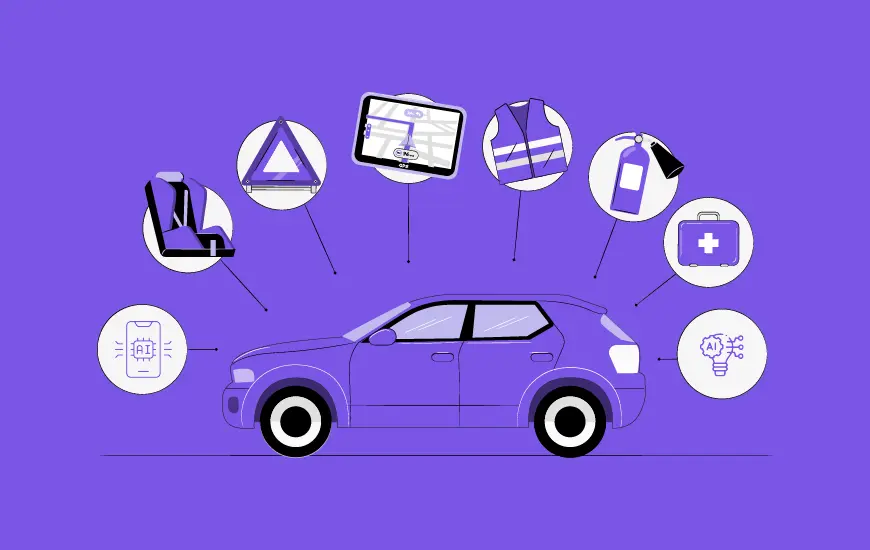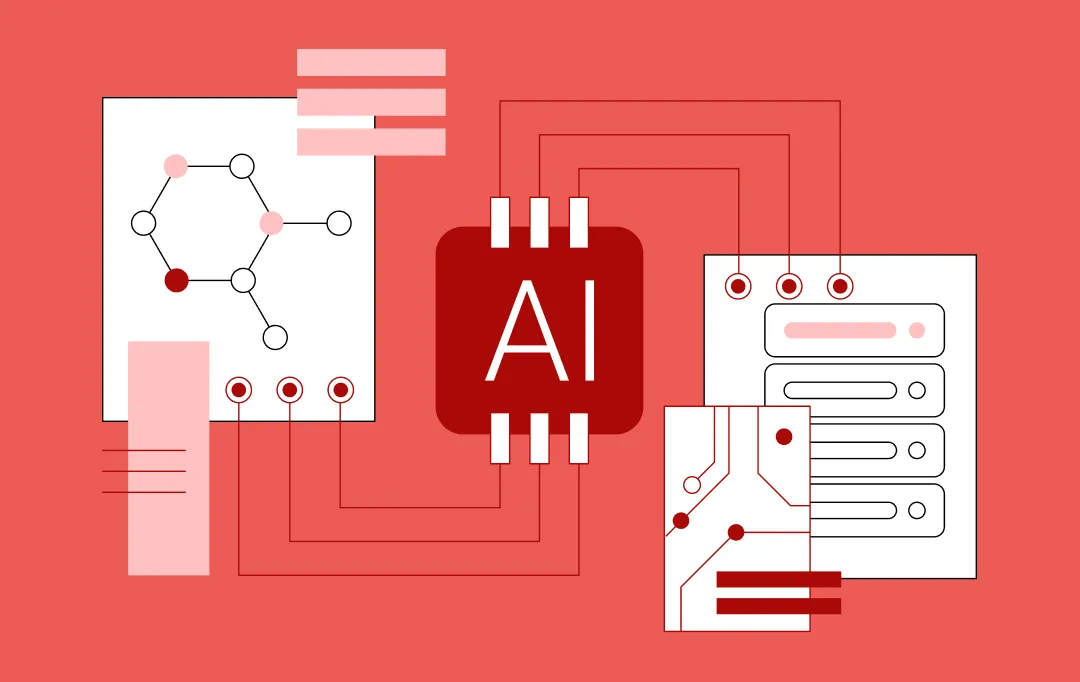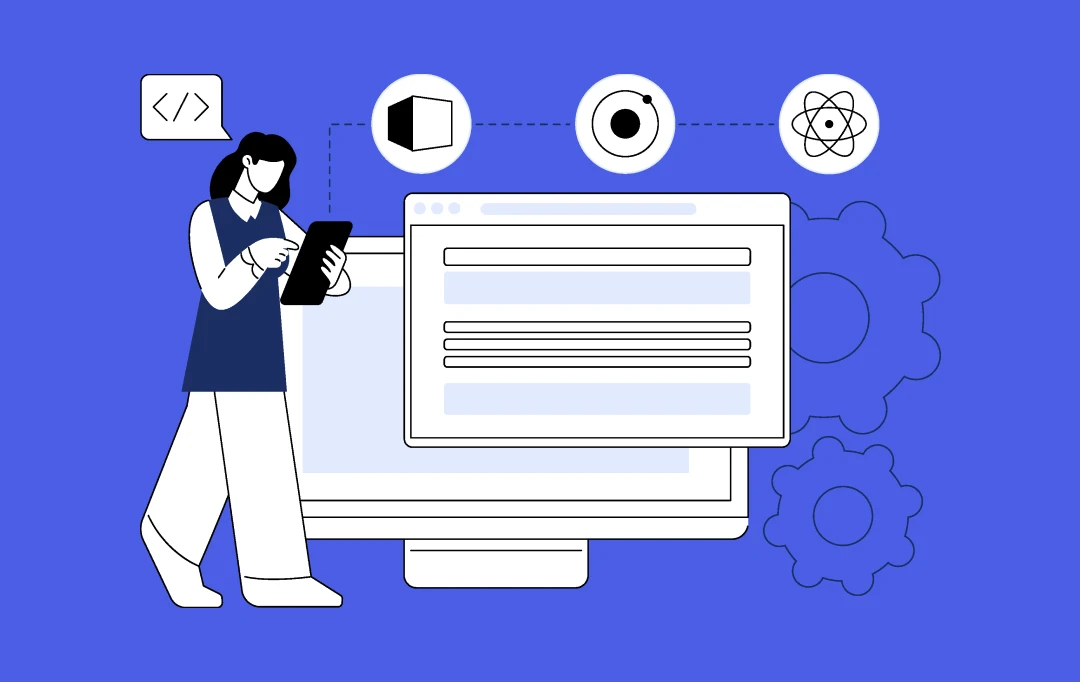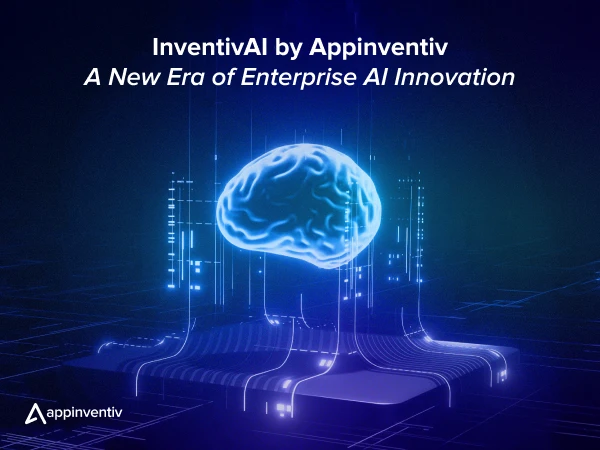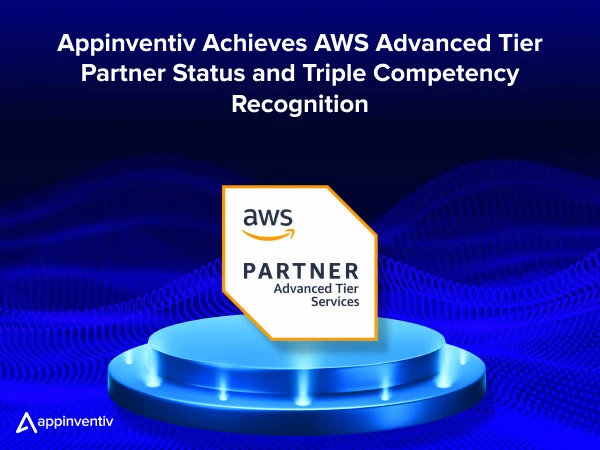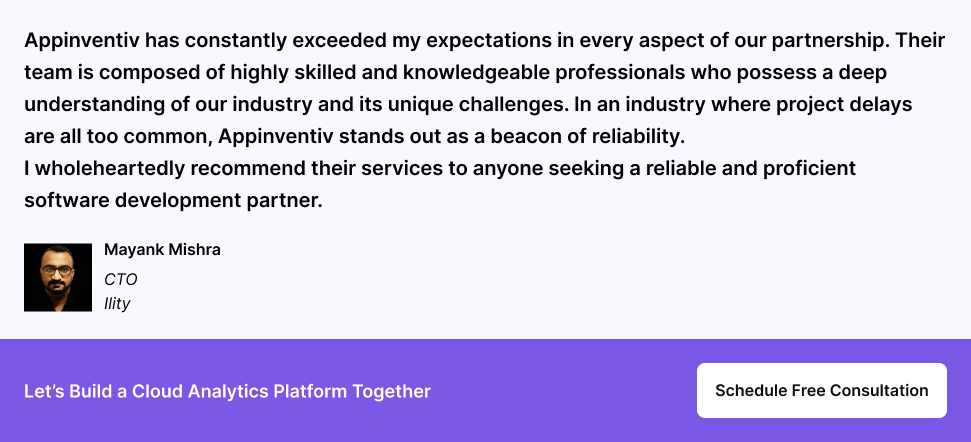- Key Differences Between Traditional Analytics and Cloud Data Analytics
- Why Businesses Need Data-Driven Decisions Faster
- How Cloud Analytics Accelerates Decision-Making
- Speed of Data Processing in Cloud Environments
- Scalability and Flexibility in Handling Large Datasets
- Real-Time Collaboration Across Teams Using Cloud Platforms
- What are The Key Benefits of Using Cloud Analytics for A Business?
- Cost Efficiency
- Enhanced Agility
- Improved Accuracy
- Increased Collaboration
- Scalability
- Real-World Applications of Cloud Analytics Driving Faster Decisions
- E-commerce
- Healthcare
- Manufacturing
- Banking and Finance
- Retail
- Telecommunications
- Agriculture
- Transportation
- Key Technologies Behind Cloud Analytics for Faster Decisions
- Big Data
- AI and Machine Learning (ML)
- Real-Time Data Processing
- Edge Computing
- Challenges & Solutions Businesses Face When Implementing Cloud Analytics
- 1. Data Security and Compliance
- 2. Data Integration
- 3. Change Management
- 4. Skill Gaps
- Emerging Trends in Cloud Analytics
- How to Implement Cloud Analytics in Your Business
- Step 1: Assess Current State and Define Objectives
- Step 2: Develop Implementation Strategy
- Step 3: Select Technology Partners
- Step 4: Design Data Architecture
- Step 5: Implement and Test
- Step 6: Train Users and Support Adoption
- Transform Your Business with Appinventiv's Cloud Data Analytics Excellence
- FAQs
Key takeaways:
- Cloud analytics accelerates decision-making by offering real-time insights and scalability.
- Businesses gain cost efficiency, enhanced agility, and improved accuracy with cloud analytics.
- Leveraging AI and big data empowers faster, smarter decision-making in industries like e-commerce, healthcare, and finance.
- While implementing cloud analytics, businesses face challenges like data security and integration, but there are clear solutions available.
- Emerging trends, such as AI-powered analytics and self-service options, are reshaping the future of cloud analytics.
In today’s hyper-competitive business landscape, the difference between market leaders and laggards often comes down to one crucial factor: the speed of decision-making. While traditional businesses spend weeks analyzing quarterly reports, data-driven organizations using cloud analytics for business growth are making strategic pivots in real-time, responding to market changes as they happen.
Consider Netflix’s remarkable transformation from a DVD rental service to a global streaming giant. Their secret weapon? Cloud data analytics that processes over 140 million hours of viewing data daily, enabling it to make instant content recommendations and strategic programming decisions. This real-time insight capability has helped Netflix maintain its competitive edge in an increasingly crowded entertainment market.
But what exactly makes cloud analytics so transformative? The answer lies in its ability to democratize data access across organizations while providing real-time processing capabilities that traditional systems simply cannot match.
Interested in uncovering more about the power of cloud analytics for business growth? Then this blog is for you. Here we will dive into the world of cloud analytics’ use cases, benefits, emerging trends, and how it can help businesses make faster, more informed decisions that drive success and agility in today’s fast-paced market.
Consult with our data experts to discover how cloud analytics can transform your business operations.
Key Differences Between Traditional Analytics and Cloud Data Analytics
Before diving deeper into the landscape of cloud analytics for business growth, it’s essential to understand the fundamental distinctions between traditional and cloud-based approaches to business intelligence.
Cloud Data Analytics is like having access to an infinite, globally distributed digital library accessible from anywhere with an internet connection. Unlike traditional on-premises systems that require significant upfront investments and lengthy implementation cycles, cloud-based analytics platforms can be deployed within days, immediately accelerating your organization’s decision-making capabilities.
Here is a brief table outlining the key differences between traditional analytics and cloud-based analytics
| Aspect | Traditional Analytics | Cloud Analytics |
|---|---|---|
| Deployment Time | 6-12 months | Days to weeks |
| Initial Investment | High (hardware, licenses) | Low (subscription-based) |
| Scalability | Limited by hardware | Virtually unlimited |
| Maintenance | IT team required | Vendor-managed |
| Accessibility | Office-bound | Anywhere, anytime |
| Update Frequency | Quarterly/Annual | Real-time |
| Collaboration | Limited sharing | Global collaboration |
| Disaster Recovery | Complex backup systems | Built-in redundancy |
Why Businesses Need Data-Driven Decisions Faster
In today’s highly competitive landscape, speed is paramount. Real-time data insights are critical for businesses to stay agile and responsive to market conditions. For instance, the retail industry relies on up-to-the-minute data to adjust inventory levels based on customer demand. Without this real-time insight, businesses risk overstocking or running out of popular products, leading to lost revenue.
According to McKinsey research, data-driven organizations are 23 times more likely to acquire customers, 6 times more likely to retain customers, and 19 times more likely to be profitable.

How Cloud Analytics Accelerates Decision-Making
The modern business environment operates at breakneck speed. Market conditions change hourly, customer preferences shift rapidly, and competitive threats emerge without warning. In this context, the ability to make faster data-driven decisions isn’t just advantageous – it’s essential for survival.
Speed of Data Processing in Cloud Environments
Cloud computing for business offers unparalleled speed in data processing. Thanks to the massive distributed systems, cloud platforms can handle large volumes of data simultaneously, enabling businesses to generate insights instantly. Unlike traditional methods, which can require hours or days to process large datasets, cloud analytics tools allow companies to gain access to actionable insights immediately.
Scalability and Flexibility in Handling Large Datasets
With cloud analytics, businesses can scale their data storage and processing capabilities without the upfront costs of expanding infrastructure. Whether handling a surge in customer data or expanding into new markets, cloud platforms such as AWS and Microsoft Azure provide the flexibility to adjust analytics capabilities on demand. This scalability ensures that businesses are always ready to handle increased data loads as they grow.
Real-Time Collaboration Across Teams Using Cloud Platforms
One of the key advantages of cloud analytics is the ability to collaborate in real time. Cloud platforms break down silos, enabling teams from different departments, such as sales, marketing, or operations to access the same data and insights simultaneously. This increased collaboration leads to faster decision-making, as teams no longer have to wait for reports or data handoffs.
What are The Key Benefits of Using Cloud Analytics for A Business?
The benefits of cloud analytics extend far beyond simple speed improvements. Organizations implementing cloud analytics solutions experience transformative changes across multiple dimensions of their operations.

Cost Efficiency
Cloud analytics solutions help businesses save money on expensive on-premise hardware and software. By shifting to cloud platforms, companies can lower their IT overhead and operational costs, paying only for what they use. The cost savings from eliminating physical infrastructure can be redirected into more strategic initiatives, like research and development or customer acquisition.
Enhanced Agility
In a world where customer preferences and market dynamics change rapidly, businesses need to respond swiftly. Cloud analytics in cloud computing provides the agility needed to quickly adapt to changing conditions. Companies can monitor customer behavior, spot emerging trends, and adjust their strategies almost instantly, giving them a competitive edge.
Improved Accuracy
AI in cloud computing plays a vital role in enhancing cloud analytics tools by integrating artificial intelligence and machine learning (ML) capabilities. These technologies enable more precise predictions and provide actionable insights, helping businesses forecast demand, optimize pricing strategies, and identify potential fraud with greater accuracy leading to smarter and faster business decisions.
Increased Collaboration
By enabling real-time data access, cloud platforms enhance teamwork across departments. Whether it’s marketing using real-time customer insights to optimize campaigns or finance analyzing cash flow trends to adjust budgets, cloud analytics services foster a collaborative environment that accelerates decision-making.
Scalability
As businesses grow, so does their data. Cloud analytics solutions offer scalability to meet increasing data needs without the significant investment required for traditional IT infrastructure. This flexibility ensures that businesses can always keep pace with the increasing volume of data.
Also Read: Unleashing the Potential of Cloud in Digital Transformation
Real-World Applications of Cloud Analytics Driving Faster Decisions
Cloud analytics plays a pivotal role across industries, allowing businesses to make quicker, data-driven decisions that drive growth. Let’s see how:
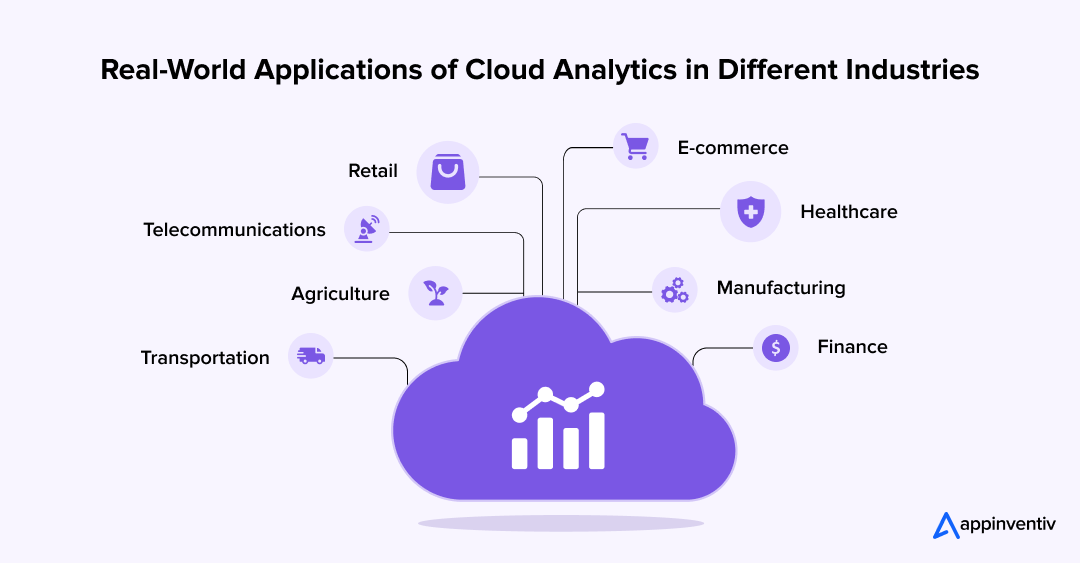
E-commerce
Cloud analytics helps e-commerce platforms personalize user experiences by analyzing customer behavior in real-time, optimizing marketing campaigns, and product recommendations. It enables businesses to target the right audience with relevant offers, driving higher engagement and conversions.
Real-life example: Amazon uses cloud analytics to recommend products to users based on browsing history and previous purchases. This real-time product suggestion system boosts customer satisfaction and conversion rates by delivering personalized experiences tailored to individual preferences.
Healthcare
Cloud analytics in healthcare provides real-time access to patient data, streamlining care coordination and improving decision-making in clinical settings. It allows healthcare providers to make quicker, more accurate treatment decisions, enhancing patient outcomes.
Real-life example: Mount Sinai Health System integrates electronic health records (EHRs) using cloud analytics to unify patient data across departments. This system enables clinicians to make data-driven decisions rapidly, resulting in improved patient care and operational efficiency.
Manufacturing
Cloud analytics enables manufacturers to optimize production processes by analyzing real-time data from machines and production lines. This leads to better decision-making in scheduling, maintenance, and resource allocation, improving overall efficiency.
Real-life example: Siemens utilizes its MindSphere platform to monitor industrial machines in real time, predicting maintenance needs before equipment failures occur. This proactive approach reduces downtime and maintenance costs, improving operational performance across its manufacturing units.
Banking and Finance
Cloud analytics in banking and finance offers real-time data processing for fraud detection, risk assessment, and financial forecasting. By analyzing transaction patterns instantly, financial institutions can make quicker, more secure decisions, minimizing losses.
Real-life example: PayPal leverages cloud analytics to detect fraudulent activities by analyzing real-time transaction data. The platform identifies suspicious patterns and prevents fraud before it escalates, ensuring secure transactions for millions of users globally.
Also Read: Data Analytics in Banking: Strategies Banks Use in 2025
Retail
In retail, cloud analytics enables inventory management and demand forecasting by analyzing customer purchase patterns in real-time. This helps businesses adjust stock levels dynamically to meet demand and optimize supply chain operations.
Real-life example: Walmart uses cloud analytics to monitor sales trends in real-time, adjusting inventory levels accordingly. This data-driven approach ensures that high-demand products are always in stock while reducing the risk of overstocking and inventory waste.
Telecommunications
Telecommunications companies use cloud analytics to optimize network performance and improve customer service by analyzing real-time data on usage and network health. It helps predict issues and enhance service quality.
Also Read: Cloud Computing Applications and Benefits in Telecom
Real-life example: Verizon employs cloud analytics to monitor and optimize its network performance. By analyzing real-time data, it predicts equipment failures and improves customer service, ensuring a smooth and uninterrupted user experience.
Agriculture
Cloud data analytics helps farmers make data-driven decisions on irrigation, fertilization, and crop health by analyzing environmental conditions and sensor data. It supports precision agriculture, leading to higher crop yields and resource conservation.
Real-life example: John Deere uses cloud analytics to monitor soil health, weather conditions, and crop performance. This data-driven approach allows farmers to optimize irrigation and fertilizer use, increasing productivity while minimizing resource consumption.
Transportation
In transportation, cloud analytics aids in optimizing routes, improving vehicle performance, and reducing fuel consumption by analyzing real-time traffic and fleet data. It helps companies increase operational efficiency and reduce costs.
Real-life example: UPS utilizes its ORION platform, powered by cloud analytics, to optimize delivery routes in real time. This system analyzes traffic patterns and vehicle data, leading to reduced fuel consumption, lower emissions, and improved delivery efficiency.
Start your real-time analytics transformation today and gain the competitive edge you need.
Key Technologies Behind Cloud Analytics for Faster Decisions
The technological foundation of modern cloud analytics platform development incorporates several cutting-edge technologies that work together to deliver unprecedented performance and capabilities.
Big Data
Big data tools are at the heart of cloud analytics, enabling businesses to process and analyze vast amounts of information. Hadoop and Spark are examples of technologies that allow businesses to handle large datasets efficiently.
AI and Machine Learning (ML)
Cloud analytics solutions leverage AI-powered analytics to deliver smarter decision-making. AI and ML algorithms help businesses predict trends, automate tasks, and generate insights that would be impossible to extract manually.
Real-Time Data Processing
Tools like Apache Kafka and Google BigQuery enable real-time data processing, allowing businesses to analyze data as it comes in and respond immediately.
Edge Computing
By processing data closer to its source, edge computing reduces the latency associated with cloud analytics, enabling businesses to access insights more quickly.
Challenges & Solutions Businesses Face When Implementing Cloud Analytics
While cloud analytics offers numerous advantages, businesses must navigate several challenges to implement these solutions successfully. Here are the common challenges and practical solutions to overcome them:
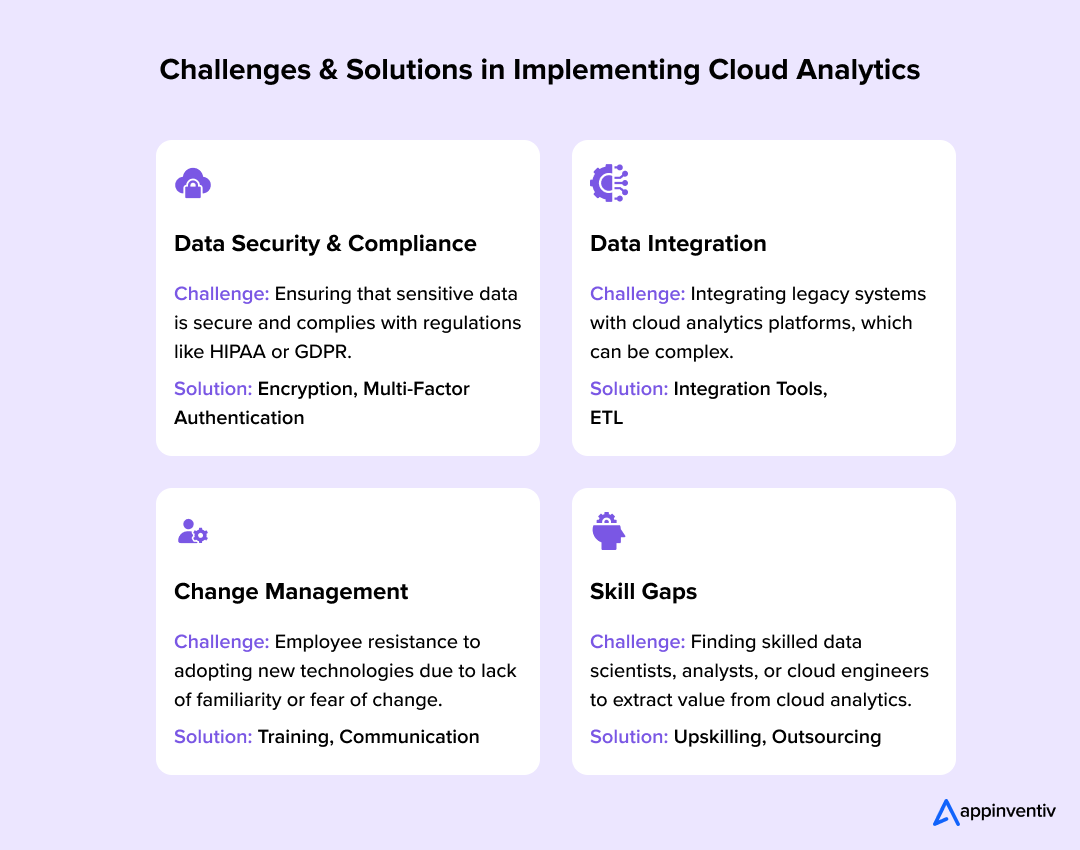
1. Data Security and Compliance
Challenge: Ensuring that sensitive data is secure and compliant with regulations such as GDPR or HIPAA is crucial. With cloud-based analytics, businesses risk exposing personal or sensitive data if not handled correctly.
Solution: To mitigate security risks, businesses should adopt robust encryption methods and utilize multi-factor authentication for access control. Partnering with trusted cloud providers that offer compliance certifications and regular security audits will ensure data security while adhering to industry regulations.
Also Read: Everything you need to know about cloud application security
2. Data Integration
Challenge: Integrating legacy systems with cloud analytics platforms can be complex. Data may exist in various formats or systems that aren’t easily compatible with modern cloud solutions.
Solution: A clear data integration strategy is essential. Businesses should invest in integration tools or platforms that support seamless migration and data transformation, such as ETL (Extract, Transform, Load) tools. Collaborating with a cloud analytics service provider experienced in system integrations can minimize disruptions during the transition.
3. Change Management
Challenge: Employee resistance to adopting new technologies is a common challenge. Staff may be hesitant to embrace cloud analytics due to a lack of familiarity or fear of change.
Solution: Overcoming resistance starts with employee training and clear communication. Offering training programs to familiarize staff with cloud analytics tools and highlighting the benefits of real-time data insights will help them understand how these tools can improve their work processes. Additionally, creating champions within the organization who can lead the adoption will encourage broader buy-in.
4. Skill Gaps
Challenge: Businesses may struggle to find skilled data scientists, analysts, or cloud engineers capable of extracting value from cloud analytics. The shortage of talent in this area can hinder successful implementation.
Solution: To bridge the skill gap, businesses can either upskill existing employees through training programs or partner with experienced cloud analytics service providers. Hiring consultants or outsourcing to specialized firms can provide immediate expertise while enabling internal teams to learn from the process.
Emerging Trends in Cloud Analytics
The landscape of cloud data analytics is rapidly evolving, driven by emerging technologies and shifts in business needs. These advancements enable businesses to leverage their data more effectively, improving decision-making, scalability, and agility. Here are some of the key trends and types of cloud analytics that are shaping the future of cloud analytics:
| Trend | Impact on Businesses |
|---|---|
| AI-Powered Analytics | AI can process vast amounts of data and uncover hidden insights, providing businesses with smarter, faster decisions. This is driving the adoption of cloud analytics for better forecasting and optimization. |
| Self-Service Analytics | This trend allows non-technical users to generate insights, reducing reliance on IT departments and speeding up decision-making. Companies are becoming more agile and data-driven. |
| Predictive Analytics | Predictive analytics enables businesses to anticipate trends, risks, and opportunities, allowing for proactive decision-making and competitive advantage in fast-changing markets. |
| Hybrid Cloud Solutions | Hybrid cloud solutions offer flexibility, enabling businesses to store sensitive data in private clouds while leveraging the public cloud for scalability and cost-efficiency. This approach enhances decision-making by optimizing both security and performance. |
How to Implement Cloud Analytics in Your Business
Embarking on a cloud analytics journey requires a structured approach, but the strategic benefits far outweigh the complexities. For businesses aiming to accelerate their data-driven decision-making, a well-planned implementation is key. Here’s a step-by-step process for adopting cloud analytics for business growth:
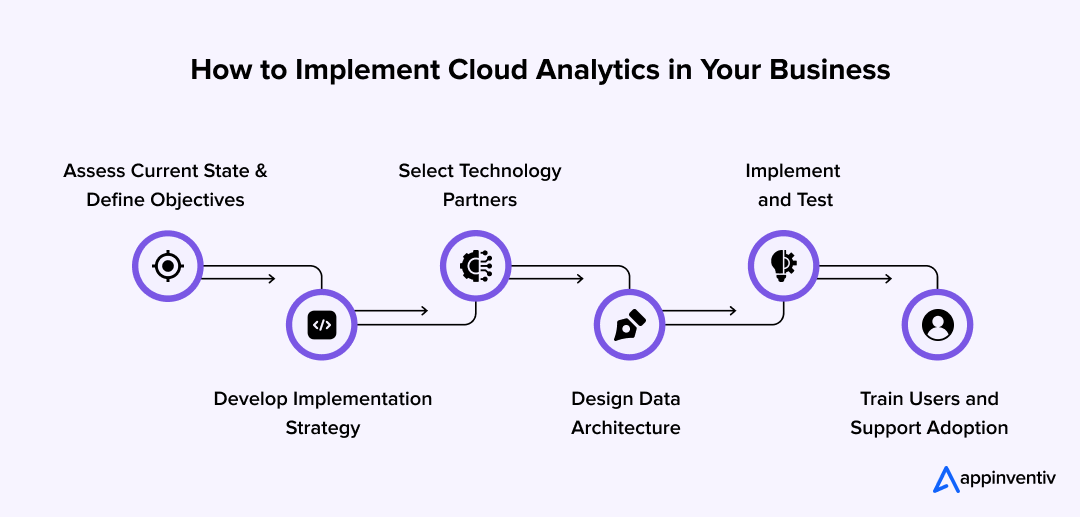
Step 1: Assess Current State and Define Objectives
Begin by evaluating your existing analytics capabilities, data sources, and business requirements. Identify specific use cases where cloud analytics can provide immediate value, such as improving customer insights, optimizing operations, or enhancing financial reporting.
Step 2: Develop Implementation Strategy
Create a comprehensive strategy that addresses technical requirements, resource needs, timeline expectations, and success metrics. Consider starting with pilot projects that demonstrate value before expanding to organization-wide implementations.
Step 3: Select Technology Partners
Choose cloud analytics platforms and implementation partners based on your specific requirements, budget constraints, and long-term objectives. Evaluate platforms based on functionality, scalability, security, and integration capabilities.
Step 4: Design Data Architecture
Plan how data will flow from source systems to analytics platforms. Consider data quality requirements, integration methods, and governance frameworks that ensure accurate, reliable insights.
Step 5: Implement and Test
Deploy systems in phases, starting with pilot implementations that validate technical approaches and user acceptance. Conduct thorough testing to ensure data accuracy, performance, and security before expanding access.
Step 6: Train Users and Support Adoption
Provide comprehensive training programs that enable users to maximize platform capabilities. Establish support processes that help users overcome challenges and continue developing their analytics skills.
You may like reading: A Complete Guide on Data Science & Analytics for Businesses
Transform Your Business with Appinventiv’s Cloud Data Analytics Excellence
In a world that operates at the speed of data, the ability to make rapid, informed decisions is no longer a luxury but a strategic imperative. Features of cloud analytics for business growth stand as the definitive answer to this challenge, transforming raw information into actionable intelligence that drives efficiency, innovation, and competitive advantage.
Appinventiv stands ready to be your trusted partner in this transformation. With over 10 years of experience in data analytics and cloud technologies, our team of 1600+ tech experts has successfully helped organizations across 35+ industries implement cloud analytics solutions that drive measurable business results.
For instance, our partnership with Ility, a SaaS-based white-label real estate platform, exemplifies how robust cloud data analytics can transform an industry. By building a scalable platform that streamlines multi-property portfolio management, we helped Ility achieve a 40% increase in occupancy and a 2% increase in landlord ROI, alongside enhanced operational efficiency and reduced infrastructure costs. This case study underscores our ability to deliver real-world impact by digitally transforming businesses through advanced cloud solutions.
From our work with established enterprises to innovative startups, we understand the unique challenges and opportunities that cloud analytics present. Our comprehensive approach encompasses strategy development, platform selection, implementation, training, and ongoing optimization. We don’t just implement technology – we help transform your organization’s decision-making capabilities to drive sustainable competitive advantages.
Ready to accelerate your business decisions with cloud data analytics? Contact Appinventiv today to schedule a consultation with our cloud analytics experts. Let us help you unlock the full potential of your data and transform your organization into a truly data-driven enterprise.
FAQs
Q. How do cloud analytics work?
A: Cloud data analytics functions by leveraging remote servers and resources provided by cloud computing platforms (like AWS, Azure, GCP) to store, process, and analyze vast datasets. Data from various sources is ingested into the cloud, where powerful computing capabilities, often enhanced by AI and Machine Learning, are used to uncover patterns, generate insights, and visualize information.
This infrastructure’s scalability and accessibility allow for real-time processing and collaborative analysis, facilitating faster and more informed business decisions from anywhere.
Q. How to choose the right cloud analytics platform?
A. Choosing the right cloud analytics platform involves assessing your specific business objectives, existing IT infrastructure, data volume and types, and budget. Consider factors like the platform’s analytical capabilities (real-time, predictive, prescriptive), integration with your current systems, security and compliance features, scalability options, and the availability of managed services and support.
Evaluating vendor ecosystems, pricing models, and long-term strategic alignment is also crucial for making an informed decision.
Q. How can cloud analytics help my business grow?
A. Cloud analytics for business growth helps by enabling faster, more accurate, and more agile decision-making. It provides real-time insights into market trends, customer behavior, and operational performance, allowing businesses to identify new opportunities, optimize resource allocation, personalize customer experiences, and respond quickly to changes.
This leads to improved operational efficiency, enhanced customer satisfaction, accelerated innovation, stronger risk management, and ultimately, increased revenue and competitive advantage.
Q. Does cloud analytics lead to faster insights?
A. Yes. Cloud analytics is inherently designed for speed. Its distributed computing architecture, real-time data processing capabilities, and on-demand scalability allow for rapid ingestion and analysis of massive datasets. This significantly reduces the time from data collection to insight generation, enabling businesses to react to dynamic market conditions, customer needs, and operational issues in near real-time, thereby leading to much faster and more impactful insights compared to traditional methods.
Q. How much does cloud analytics cost?
A. The cost of cloud analytics varies significantly based on factors such as the volume of data processed and stored, the intensity of computing resources used, the specific services and cloud analytics tools employed, and the cloud provider (AWS, Azure, GCP).
Most cloud analytics models operate on a “pay-as-you-go” basis, meaning you only pay for what you consume. This eliminates large upfront capital expenditures associated with on-premise infrastructure but requires careful monitoring and optimization of usage to manage costs effectively. Many organizations also factor in the cost of expert cloud analytics services for implementation and ongoing management.
On average, cloud analytics costs around $30,000 to 300,000 or more.
Q. What are the challenges of cloud analytics adoption?
A. Key challenges in cloud-based analytics adoption include ensuring robust data security and compliance with regulations (like GDPR and HIPAA), integrating disparate legacy data sources into the cloud environment, managing the organizational change and potential resistance from employees, and addressing skill gaps within the workforce needed to operate and optimize cloud analytics platforms.
Overcoming these challenges often requires a well-defined strategy, investment in relevant tools, and potentially partnering with experienced cloud analytics solutions providers.


- In just 2 mins you will get a response
- Your idea is 100% protected by our Non Disclosure Agreement.

Green Cloud - How Cloud Adoption Helps Improve Sustainability/ESG Goals of Enterprises
Key takeaways: Adopting green cloud solutions lowers energy consumption, cuts emissions, and reduces operational costs. Companies like UEM Edgenta and Bharti Airtel have seen measurable improvements in sustainability and efficiency. AI Enhances Green Cloud Efficiency. AI optimizes energy use, predicts demand, and minimizes waste in cloud infrastructure. Your Green Cloud Roadmap. Start with an infrastructure…

Cloud Migration Strategy for Enterprises in Australia: Benefits, Implementation Process and Tools
Key takeaways: Cloud migration in Australia is accelerating as enterprises modernize aging systems and prepare for AI-driven workloads. Local cloud regions in Sydney, Melbourne and Brisbane make compliance and performance far easier for large-scale migrations. A strong cloud migration strategy for enterprises in Australia depends on clear assessment, the right tools and ongoing optimization. Industry…
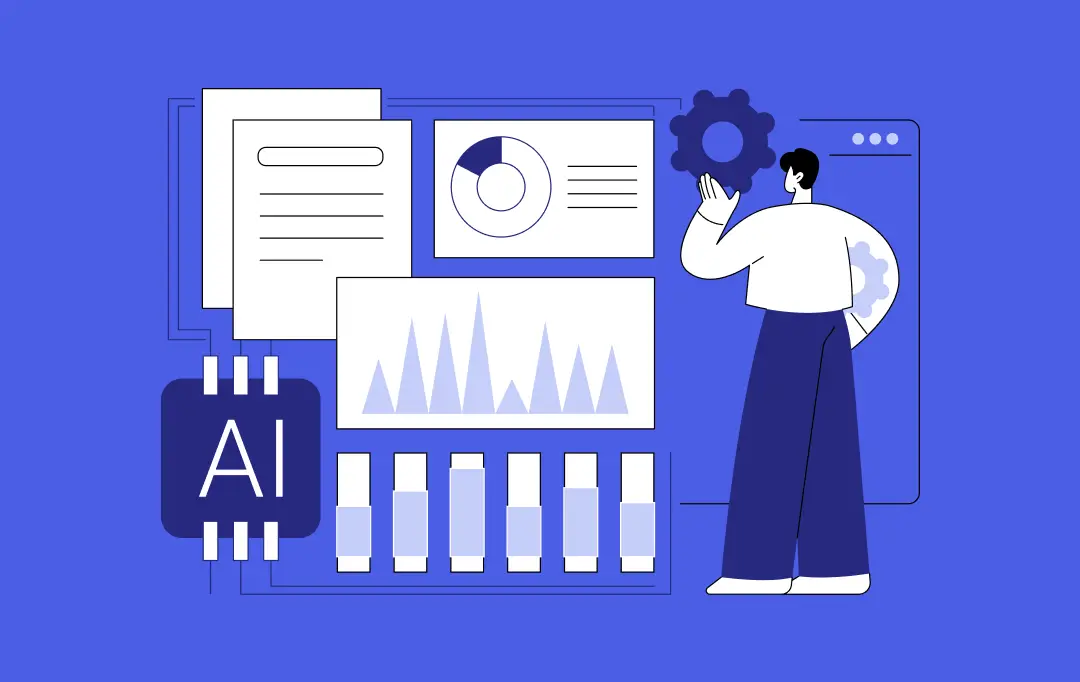
How to Ensure Data Integrity and Security During Cloud Migration?
Key takeaways: Learn how to assess risks during migration, ensuring data integrity and compliance with global standards like GDPR and HIPAA. Secure your cloud transition by implementing encryption, checksum verification, and real-time validation to maintain data accuracy. Address issues like legacy data models, schema mismatches, downtime, and third-party toolchain risks that could threaten data integrity.…








